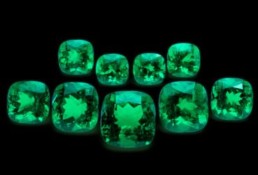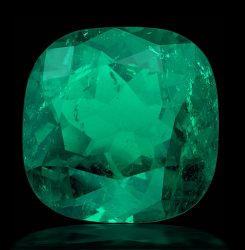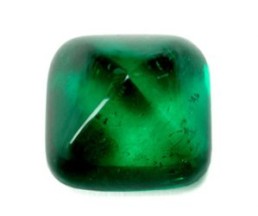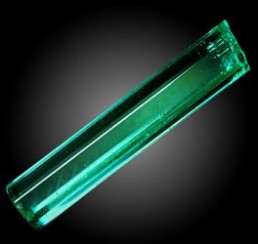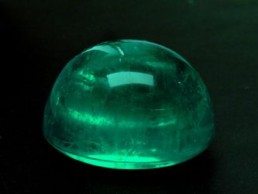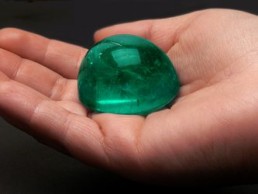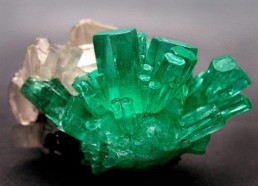Pakistani Mineral Brokerage
Since 2000
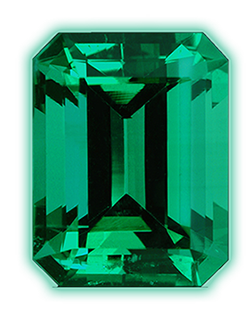
ABOUT
We Are At The Source – Located in the heart of the gemstone trade in Swat, Pakistan, we are a second-generation, wholesale brokerage serving the emerald trade. SIIT GEMS is the choice company for your emerald needs. Our expertise, reliability and safety will surely meet your expectations.
Services – Expert advice for your purchases. Quality and price assessment. Gemological analysis. Gemstone re cutting. Shipping via insured courier. Enhancement consulting
Our Personnel – You can rely on us. Our staff is made up of the most competent people in the business. We have a two-generation tradition in assisting our clients in their emerald choices. You can make an expedite selection from a full updated database of the gemstones available in the current market. Our expert English speaking advisors will provide quality and price assessment to help you make the best possible deals. We also count on qualified gemologists on premises to assist you in gem analysis and enhancement consulting. Skilful experienced cutters are prepared to meet your re-cutting needs. Additionally we will help you in the process of shipping your gems safely to your location via insured courier.
Emeralds

Specie: Beryl.
Chemical composition: Beryllium Aluminum Silicate.
Chemical Formula: BE3AL2SI6O18
Hardness (Moh’s Scale): 7.5 – 8.0
Fracture: Conchoidal vitreous.
Cleavage: Imperfect.
Luster: Vitreous, in polished surfaces.
Specific Gravity: 2.67-2.71
Crystal System: First order hexagonal prism, tabular habit, flat well terminated surfaces common, etching and growth marks.
Optic sign and character: U (-)
Pleochroism: Varies according to body color in intensities from weak to distinct varies according to body color in intensities from weak to distinct.
Refractive index: 1.569- 1.575 — Varies with origin and locality.
Birefringence: .06
Chemical elements responsible for color: Chromium, Vanadium, Iron.
Fluorescence: UV (Short wave) : variable, from inert to very pale reddish pink.
UV (Long wave) :variable, from inert to medium reddish pink to red.
Absorption Spectra: Typical chromium with doublet in deep red at about 680-685nm line at 635-640 wide absorption band in yellow. Varies slightly with origin.
Phenomena: Chatoyance is Rare , “Trapiche Star” fix six ray star (Colombian Emerald).
Thermal conductivity: Medium low
Reaction to heat: May cause fracturing or breakage.
Reaction to chemicals: Resistant to all acids except hydrofluoric acid.
Electric conductivity: Beryls in general are nonconductors.
Modes of formation: Hydrothermal and in Pegmatites.
Main producers: Colombia, Brazil, Zambia, Pakistan, Afghanistan, Madagascar and Russia.
Oldest source of emeralds: Egypt (Not presently under production).
Cutting Style: The ideal cut depends on the shape and color distribution of the rough material. The ideal cutting style used is the rectangular or square step cut known as “Emerald Cut.” Other cutting styles suit Emeralds. It is common to find Emeralds in oval shape, pear shape and cabochon. The cushion shape, marquee and round shape cuts are less common.
Buying Tips
Always make a careful, naked-eye observation of the gemstone you intend to buy. Observe the gem in all directions under different lighting conditions (natural light, incandescent, fluorescent, halogen). This first careful observation is the key to establishing the identity, characteristics and quality of the material under analysis.
Hold the stone in your fingers and feel it. Don’t use tweezers or magnifying lenses at this stage.
Pay close attention to the color of the gemstone. It is normally this first color impression that will indicate the origin of the stone, whetherit is natural, and what country it is from or whether synthetics or imitations should be suspected.
Don’t forget that color is the most important factor in the price evaluation of colored gemstones and the most difficult to determine. If you are not proficient in the color subtleties of the stone you are observing, seek the assistance of a qualified gem dealer.
Carefully study the surface of the gemstone by tilting it and using oblique lighting techniques to view the surface. If cracks and fissures are detected with the naked eye, it is a sign of a highly -treated stone that could be damaged easily. Make sure the gemstone surface is free of grease, dust or anything that might interfere with your observation.
Carefully observe the brilliance of the stone and the faceting style. These elements will be considered in the identification and price evaluation process.
Once this initial observation stage is completed and if you have not observed damages that could endanger the stone, proceed to handle the stone with tweezers and a 10X loop.
Study the stones’ transparency and clarity, the second most important aspect in price evaluation.
Look closely at the features that will confirm the right identity of the gemstone. Pay close attention to the inclusions. This can yield a fair assessment of the mine origin. And, this can affect overall brilliance and durability of the material.
Continue by studying the surface of the stone, make sure you are not looking perpendicular to the surface, but in an oblique fashion. This technique will allow you to observe the treated areas of the stone starting from the surface where the treating agent was introduced. Alternate between dark and light backfields. This will aid your observation of the internal features and fractures. Try to determine the origin of the enhancing material that will affect the overall presence and durability of the stone in the future. When in doubt, seek the assistance of a qualified gem testing laboratory.
Observe the overall cutting and polishing of the surfaces. This is the third most important factor in the price assessment of a gemstone. It will affect the brilliance of the gemstone.
Shape and overall balance and harmony of form are important factors in the marketability of gemstones. Keep this in mind.
Don’t forget the maxim, “It’s too good to be true,” when presented with a gemstone at a below market price. Be aware, the material is either something different from what it appears to be under naked eye observation or its provenance is doubtful. Keep away from both situations.
Don’t forget the most important factor in buying gemstones is to do it whenever possible through well established, reputable dealers or jewelry stores.
When buying a gemstone, if you do not have experience, request a Gemological Certificate of Identification, issued by a qualified third party not related in any manner to the seller.
The buying tips given here apply best to loose stones. Gemstones set in jewelry are generally more complex to identify and evaluate, especially if set low on the mountings.
There are gemologists and qualified laboratories in most major cities in the world. For a partial listing, please refer to the section Gem Labs For further referrals and gemstone information, please refer to the section on Trade Organizations, Education.
This was interpreted as a sad premonition of the dark times to come for the Muzo people with the advent of the Spanish conquest. For the Muzo culture, as for many others in the East and West, emeralds are thought to have clairvoyance and prophetic powers.
MYSTICAL AND ASTROLOGICAL ASSOCIATIONS OF EMERALDS
*In the Bible, Emerald is thought to be one of the gemstones of the High Priest’s Breastplate. The reference is given in Exodus: 17-20. *Since antiquity, Emerald has been regarded as a springtime gemstone, and thus associated in some cultures with youth. Royal Egyptian mummies were often buried with what was called a “papyrus scepter” bearing Emeralds. This, to grant the deceased with eternal youth. *In Hindu astrology, Emerald is associated with the planet Mercury, whereas in the Western tradition it is related to Venus. *Emerald is the zodiacal gem for those born under the sign of Cancer.
EMERALD’S HEALING PROPERTIES
In many antique medical treatises of Eastern and Western cultures alike, gemstones were referred to as having diverse healing properties, of which the most common for emerald are the ones listed below:
-Guards against poison and venomous bites -A cure against epilepsy -Induces fertility and prevents abortions -Heals and relaxes the eyes -In stomach disorders, such as dysentery -Induces sleep -An aid in leprosy wounds
MAGICAL POWERS OF EMERALDS
In many traditions all over the world, emeralds, far more than simply adorning their users, were believed to grant their owners magical powers and to protect them in the following cases, among others:
-Protection against demoniacal possession -Increase mental powers -Provide clairvoyance -Mental clarity -Strengthen love and fidelity (not passionate love)
History is full of legends and recorded episodes where gemstones played an important role in historical events.
Yes, in order for a gemstone to be referred to as an emerald, it must have a certain intensity and saturation of green color within the green-yellow or blue-yellow color hues. If the gemstone does not meet this criteria of the right color hue, correct saturation and intensity, it should correctly be called green-beryl and not emerald.
-Where are the emerald mines located?
The emerald mining areas in Colombia are basically located in two different states. The most important producers (Muzo and Coscuez) are in the state of Boyaca, about 200 kmt north from Bogota, and comprise the “Special Emerald Reserve”. The second producing area is located in the eastern part of the state of Cundinamarca. In this region lie the Chivor and Gachala mining areas. These two main producing areas, even though hundreds of kilometers away from each other, share the same geological fault. To date, no additional mining areas have been discovered in Colombia.
-Is Colombia the only emerald producer?
No, Colombia is not the only emerald producer. Colombia is the largest producer in dollar value in recent years. Other countries like Brazil and Zambia produce substantial volumes of emeralds but the quality is lower in the larger size goods. There are other producers like Sandawala in Africa, the Ural mountains in Russia and the high altitude emerald deposits of Afghanistan.
-Who owns the emerald mines?
The emerald mines, as all other mineral rights in Colombia are owned by the State. The State leases out areas to private companies or individuals. There are two basic types of permits. A permit granted for the exploitation of larger areas and other permits for small mining projects. The payment is established in proportion to the areas granted. A flat rate is established independent of the levels of production.
-How can you know if an emerald is from Colombia?
Normally, Colombian Emeralds have a particular color and intensity. An experienced dealer learns to distinguish the subtleties of color, to the point of being able, in most cases, to ascertain the provenance of a stone by observing the color and intensity, along with a thorough examination at magnification of 10X . From a more scientific approach, the correct identification of the origin of a gemstone, can be established by means of microscopic analysis using magnifications up to 120X . If no conclusion can be drawn from a careful microscopic observation, a variety of sophisticated techniques can be employed such as an electronic scanning microscope. In any event, the correct identification can be established, since each gemstone carries within a collection of chemical traces and mineral inclusions matching the geology of the mine of origin.
-Do synthetic emeralds exist?
Yes, they are very common and becoming more common every day. Emeralds were the latecomers into the synthetic market due to complications in the manufacturing process. The first synthetic corundum (ruby and sapphire) appeared in the market at the end of 19th century. Emeralds were manufactured successfully only until 1954. Today there is more than a dozen producers scattered worldwide producing high quality synthetic emeralds for laser use and the gemstone market.
-Can you easily tell the difference between natural and synthetic emeralds?
No, it is extremely difficult in some cases to establish the difference between a natural and a synthetic stone. There has been instances were individuals have paid astronomical amounts of money for what ended up being a synthetic stone. If you are not an expert in the field of gem identification, we recommend buying your Emeralds from qualified, well established gem dealers. If in doubt, ask to have the stone identified by an independent gemologist or laboratory.
-What factors affect the price of an emerald?
As with all other color gems, the price of emeralds depends mostly on the quality of the color, being ideal, a rich green-yellowish (or green-bluish), medium to high saturation and a high degree of brilliance. Clarity or the amount of internal damage affect the price. The cleaner the stone the higher the value. The cut and general proportion must also be taken into account. The stone should be well proportioned and meticulously cut and polished. The size obviously affects the price; as the size of the stone increases, so does the price per carat. It is extremely unusual to find a large emerald, of over 10 carats that will be “eye clean”, which means it has the perfect color and brilliancy. When a large, eye clean stone appears in the market, it fetches exorbitant prices.
-How big is a big emerald?
Commercially speaking, an emerald over ten carats is considered a “big” stone. There is, however, a special market for crown jewels and special ornaments that exhibit emeralds of hundreds of carats. Emeralds in rough have been known to occur in sizes of thousands of carats. There is a number of this large hexagonal crystals in museums in various parts of the world.
-Are emeralds fashioned like diamonds?
No, each gemstone, because of the unique way in which it transmits light when passing trough it, must be fashioned to take the best advantage of this phenomena. How light behaves trough the stone depends on the refractive index of the material and its hardness. Emeralds are normally fashioned and best exhibit their color, when fashioned in the rectangular or square “emerald cut”. When stones are fashioned in their ideal proportion, the light the stone returns to the eye is maximized by the proper cut of the pavilion facets and ideal polish.
-How does the price of emerald compare to the price of diamonds and other gems?
Like the other big commercial gemstones, diamonds, ruby and Sapphire, emeralds rank side by side and are considered by some to fetch the highest prices after diamonds. This, however, is an open issue since the price of each individual color stone depends on varying factors that are not as clearly laid out as the pricing structure of diamonds. Sporadically high quality emeralds in sizes below 20 carats have fetched prices in the levels of 20.000 to 40.000 us dollars per carat.
-How can I best care for my emeralds?
Emeralds, like all other gemstones must be guarded against direct impact. Even a diamond if dropped on a marble floor or hit with force against a hard surface can fracture, abrade or remain with a concussion mark. Emeralds should not be exposed to drastic temperature changes that may affect the integrity of the stone. Because of the nature of the oiling process to which emeralds are exposed to after fashioning, care must be taken when applying hot water and soap to the gemstones. It is best recommended to remove your jewelry before washing your hands with hot water.
-How hard are emeralds compared with other gemstones?
The hardness of a material is the resistance the material has to scratching. The Moh´s scale of hardness places emerald hardness between 8-8.5, meaning it will be scratched by minerals with hardness equal or superior to 8-8.5. The hardness of emerald is below that of diamond (10) and corundum (9). However, emerald because of its irregular cleavage, is difficult to simply fracture. The toughness, which is the resistance to breakage, is considered medium-high in emeralds, as it is in other gemstones.
Ruby
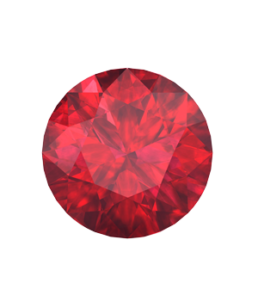
Specie: Beryl.
Chemical composition: Beryllium Aluminum Silicate.
Chemical Formula: BE3AL2SI6O18
Hardness (Moh’s Scale): 7.5 – 8.0
Fracture: Conchoidal vitreous.
Cleavage: Imperfect.
Luster: Vitreous, in polished surfaces.
Specific Gravity: 2.67-2.71
Crystal System: First order hexagonal prism, tabular habit, flat well terminated surfaces common, etching and growth marks.
Optic sign and character: U (-)
Pleochroism: Varies according to body color in intensities from weak to distinct varies according to body color in intensities from weak to distinct.
Refractive index: 1.569- 1.575 — Varies with origin and locality.
Birefringence: .06
Chemical elements responsible for color: Chromium, Vanadium, Iron.
Fluorescence: UV (Short wave) : variable, from inert to very pale reddish pink.
UV (Long wave) :variable, from inert to medium reddish pink to red.
Absorption Spectra: Typical chromium with doublet in deep red at about 680-685nm line at 635-640 wide absorption band in yellow. Varies slightly with origin.
Phenomena: Chatoyance is Rare , “Trapiche Star” fix six ray star (Colombian Emerald).
Thermal conductivity: Medium low
Reaction to heat: May cause fracturing or breakage.
Reaction to chemicals: Resistant to all acids except hydrofluoric acid.
Electric conductivity: Beryls in general are nonconductors.
Modes of formation: Hydrothermal and in Pegmatites.
Main producers: Colombia, Brazil, Zambia, Pakistan, Afghanistan, Madagascar and Russia.
Oldest source of emeralds: Egypt (Not presently under production).
Cutting Style: The ideal cut depends on the shape and color distribution of the rough material. The ideal cutting style used is the rectangular or square step cut known as “Emerald Cut.” Other cutting styles suit Emeralds. It is common to find Emeralds in oval shape, pear shape and cabochon. The cushion shape, marquee and round shape cuts are less common.
Buying Tips
Always make a careful, naked-eye observation of the gemstone you intend to buy. Observe the gem in all directions under different lighting conditions (natural light, incandescent, fluorescent, halogen). This first careful observation is the key to establishing the identity, characteristics and quality of the material under analysis.
Hold the stone in your fingers and feel it. Don’t use tweezers or magnifying lenses at this stage.
Pay close attention to the color of the gemstone. It is normally this first color impression that will indicate the origin of the stone, whetherit is natural, and what country it is from or whether synthetics or imitations should be suspected.
Don’t forget that color is the most important factor in the price evaluation of colored gemstones and the most difficult to determine. If you are not proficient in the color subtleties of the stone you are observing, seek the assistance of a qualified gem dealer.
Carefully study the surface of the gemstone by tilting it and using oblique lighting techniques to view the surface. If cracks and fissures are detected with the naked eye, it is a sign of a highly -treated stone that could be damaged easily. Make sure the gemstone surface is free of grease, dust or anything that might interfere with your observation.
Carefully observe the brilliance of the stone and the faceting style. These elements will be considered in the identification and price evaluation process.
Once this initial observation stage is completed and if you have not observed damages that could endanger the stone, proceed to handle the stone with tweezers and a 10X loop.
Study the stones’ transparency and clarity, the second most important aspect in price evaluation.
Look closely at the features that will confirm the right identity of the gemstone. Pay close attention to the inclusions. This can yield a fair assessment of the mine origin. And, this can affect overall brilliance and durability of the material.
Continue by studying the surface of the stone, make sure you are not looking perpendicular to the surface, but in an oblique fashion. This technique will allow you to observe the treated areas of the stone starting from the surface where the treating agent was introduced. Alternate between dark and light backfields. This will aid your observation of the internal features and fractures. Try to determine the origin of the enhancing material that will affect the overall presence and durability of the stone in the future. When in doubt, seek the assistance of a qualified gem testing laboratory.
Observe the overall cutting and polishing of the surfaces. This is the third most important factor in the price assessment of a gemstone. It will affect the brilliance of the gemstone.
Shape and overall balance and harmony of form are important factors in the marketability of gemstones. Keep this in mind.
Don’t forget the maxim, “It’s too good to be true,” when presented with a gemstone at a below market price. Be aware, the material is either something different from what it appears to be under naked eye observation or its provenance is doubtful. Keep away from both situations.
Don’t forget the most important factor in buying gemstones is to do it whenever possible through well established, reputable dealers or jewelry stores.
When buying a gemstone, if you do not have experience, request a Gemological Certificate of Identification, issued by a qualified third party not related in any manner to the seller.
The buying tips given here apply best to loose stones. Gemstones set in jewelry are generally more complex to identify and evaluate, especially if set low on the mountings.
There are gemologists and qualified laboratories in most major cities in the world. For a partial listing, please refer to the section Gem Labs For further referrals and gemstone information, please refer to the section on Trade Organizations, Education.
This was interpreted as a sad premonition of the dark times to come for the Muzo people with the advent of the Spanish conquest. For the Muzo culture, as for many others in the East and West, emeralds are thought to have clairvoyance and prophetic powers.
MYSTICAL AND ASTROLOGICAL ASSOCIATIONS OF EMERALDS
*In the Bible, Emerald is thought to be one of the gemstones of the High Priest’s Breastplate. The reference is given in Exodus: 17-20. *Since antiquity, Emerald has been regarded as a springtime gemstone, and thus associated in some cultures with youth. Royal Egyptian mummies were often buried with what was called a “papyrus scepter” bearing Emeralds. This, to grant the deceased with eternal youth. *In Hindu astrology, Emerald is associated with the planet Mercury, whereas in the Western tradition it is related to Venus. *Emerald is the zodiacal gem for those born under the sign of Cancer.
EMERALD’S HEALING PROPERTIES
In many antique medical treatises of Eastern and Western cultures alike, gemstones were referred to as having diverse healing properties, of which the most common for emerald are the ones listed below:
-Guards against poison and venomous bites -A cure against epilepsy -Induces fertility and prevents abortions -Heals and relaxes the eyes -In stomach disorders, such as dysentery -Induces sleep -An aid in leprosy wounds
MAGICAL POWERS OF EMERALDS
In many traditions all over the world, emeralds, far more than simply adorning their users, were believed to grant their owners magical powers and to protect them in the following cases, among others:
-Protection against demoniacal possession -Increase mental powers -Provide clairvoyance -Mental clarity -Strengthen love and fidelity (not passionate love)
History is full of legends and recorded episodes where gemstones played an important role in historical events.
Yes, in order for a gemstone to be referred to as an emerald, it must have a certain intensity and saturation of green color within the green-yellow or blue-yellow color hues. If the gemstone does not meet this criteria of the right color hue, correct saturation and intensity, it should correctly be called green-beryl and not emerald.
-Where are the emerald mines located?
The emerald mining areas in Colombia are basically located in two different states. The most important producers (Muzo and Coscuez) are in the state of Boyaca, about 200 kmt north from Bogota, and comprise the “Special Emerald Reserve”. The second producing area is located in the eastern part of the state of Cundinamarca. In this region lie the Chivor and Gachala mining areas. These two main producing areas, even though hundreds of kilometers away from each other, share the same geological fault. To date, no additional mining areas have been discovered in Colombia.
-Is Colombia the only emerald producer?
No, Colombia is not the only emerald producer. Colombia is the largest producer in dollar value in recent years. Other countries like Brazil and Zambia produce substantial volumes of emeralds but the quality is lower in the larger size goods. There are other producers like Sandawala in Africa, the Ural mountains in Russia and the high altitude emerald deposits of Afghanistan.
-Who owns the emerald mines?
The emerald mines, as all other mineral rights in Colombia are owned by the State. The State leases out areas to private companies or individuals. There are two basic types of permits. A permit granted for the exploitation of larger areas and other permits for small mining projects. The payment is established in proportion to the areas granted. A flat rate is established independent of the levels of production.
-How can you know if an emerald is from Colombia?
Normally, Colombian Emeralds have a particular color and intensity. An experienced dealer learns to distinguish the subtleties of color, to the point of being able, in most cases, to ascertain the provenance of a stone by observing the color and intensity, along with a thorough examination at magnification of 10X . From a more scientific approach, the correct identification of the origin of a gemstone, can be established by means of microscopic analysis using magnifications up to 120X . If no conclusion can be drawn from a careful microscopic observation, a variety of sophisticated techniques can be employed such as an electronic scanning microscope. In any event, the correct identification can be established, since each gemstone carries within a collection of chemical traces and mineral inclusions matching the geology of the mine of origin.
-Do synthetic emeralds exist?
Yes, they are very common and becoming more common every day. Emeralds were the latecomers into the synthetic market due to complications in the manufacturing process. The first synthetic corundum (ruby and sapphire) appeared in the market at the end of 19th century. Emeralds were manufactured successfully only until 1954. Today there is more than a dozen producers scattered worldwide producing high quality synthetic emeralds for laser use and the gemstone market.
-Can you easily tell the difference between natural and synthetic emeralds?
No, it is extremely difficult in some cases to establish the difference between a natural and a synthetic stone. There has been instances were individuals have paid astronomical amounts of money for what ended up being a synthetic stone. If you are not an expert in the field of gem identification, we recommend buying your Emeralds from qualified, well established gem dealers. If in doubt, ask to have the stone identified by an independent gemologist or laboratory.
-What factors affect the price of an emerald?
As with all other color gems, the price of emeralds depends mostly on the quality of the color, being ideal, a rich green-yellowish (or green-bluish), medium to high saturation and a high degree of brilliance. Clarity or the amount of internal damage affect the price. The cleaner the stone the higher the value. The cut and general proportion must also be taken into account. The stone should be well proportioned and meticulously cut and polished. The size obviously affects the price; as the size of the stone increases, so does the price per carat. It is extremely unusual to find a large emerald, of over 10 carats that will be “eye clean”, which means it has the perfect color and brilliancy. When a large, eye clean stone appears in the market, it fetches exorbitant prices.
-How big is a big emerald?
Commercially speaking, an emerald over ten carats is considered a “big” stone. There is, however, a special market for crown jewels and special ornaments that exhibit emeralds of hundreds of carats. Emeralds in rough have been known to occur in sizes of thousands of carats. There is a number of this large hexagonal crystals in museums in various parts of the world.
-Are emeralds fashioned like diamonds?
No, each gemstone, because of the unique way in which it transmits light when passing trough it, must be fashioned to take the best advantage of this phenomena. How light behaves trough the stone depends on the refractive index of the material and its hardness. Emeralds are normally fashioned and best exhibit their color, when fashioned in the rectangular or square “emerald cut”. When stones are fashioned in their ideal proportion, the light the stone returns to the eye is maximized by the proper cut of the pavilion facets and ideal polish.
-How does the price of emerald compare to the price of diamonds and other gems?
Like the other big commercial gemstones, diamonds, ruby and Sapphire, emeralds rank side by side and are considered by some to fetch the highest prices after diamonds. This, however, is an open issue since the price of each individual color stone depends on varying factors that are not as clearly laid out as the pricing structure of diamonds. Sporadically high quality emeralds in sizes below 20 carats have fetched prices in the levels of 20.000 to 40.000 us dollars per carat.
-How can I best care for my emeralds?
Emeralds, like all other gemstones must be guarded against direct impact. Even a diamond if dropped on a marble floor or hit with force against a hard surface can fracture, abrade or remain with a concussion mark. Emeralds should not be exposed to drastic temperature changes that may affect the integrity of the stone. Because of the nature of the oiling process to which emeralds are exposed to after fashioning, care must be taken when applying hot water and soap to the gemstones. It is best recommended to remove your jewelry before washing your hands with hot water.
-How hard are emeralds compared with other gemstones?
The hardness of a material is the resistance the material has to scratching. The Moh´s scale of hardness places emerald hardness between 8-8.5, meaning it will be scratched by minerals with hardness equal or superior to 8-8.5. The hardness of emerald is below that of diamond (10) and corundum (9). However, emerald because of its irregular cleavage, is difficult to simply fracture. The toughness, which is the resistance to breakage, is considered medium-high in emeralds, as it is in other gemstones.
Contact
Sultan Ilham International Traders Gems
Address : 4th Floor, Zahra Icon, Plot no, 179, Bahria Town Phase IV Civic Center Bahria Town, Islamabad, Punjab 45710
Phone : +(60) 196 739 963
Email: info@siitgems.com

